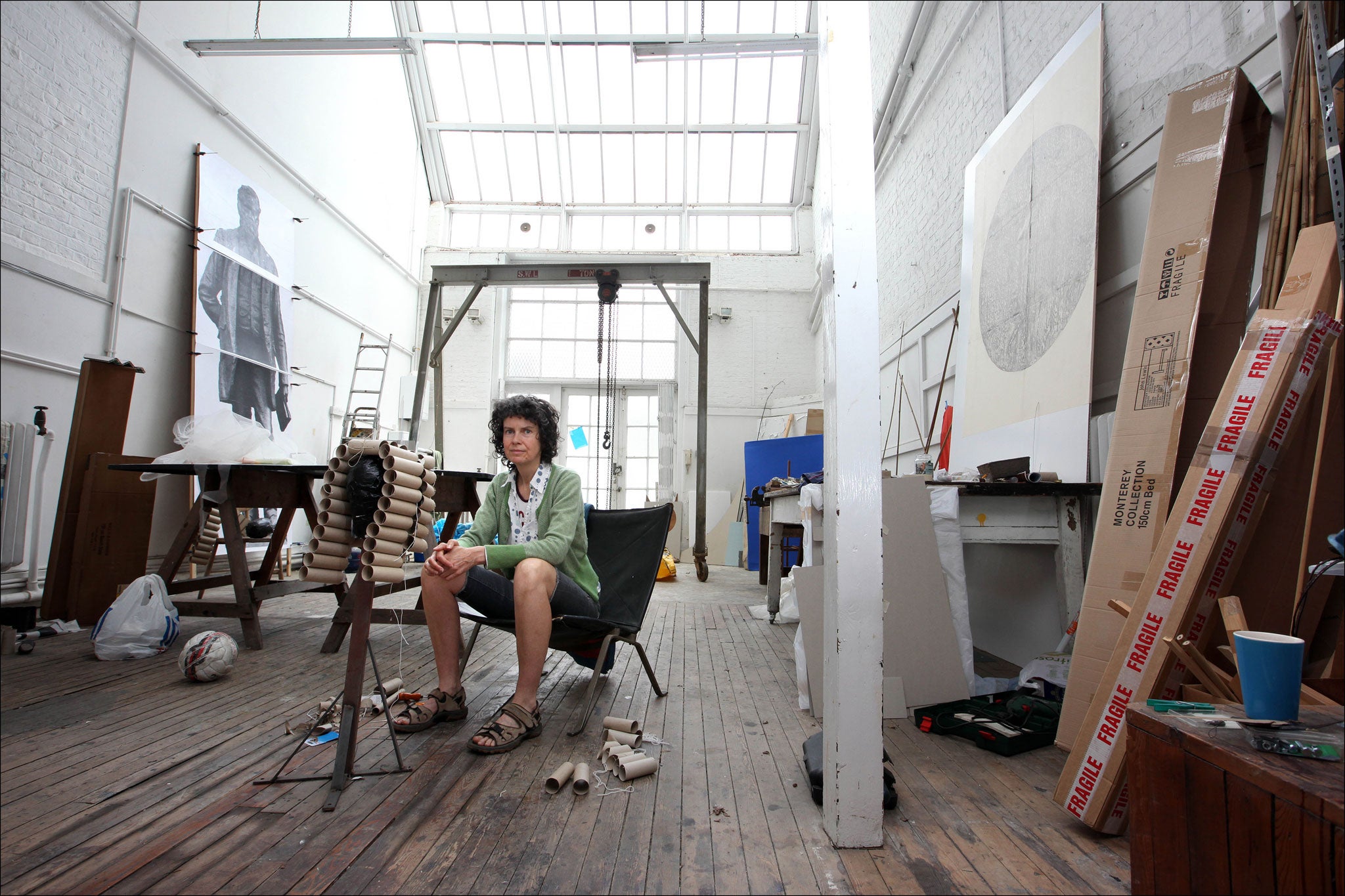In The Studio: Lucy Gunning, artist
'I don't know if my work is changing or whether this place has changed me'

Lucy Gunning is finally coming to terms with being in a studio belonging to another artist – in this case a dead one, Kenneth Armitage. She admits that it has taken time but she is learning to negotiate the space both physically and mentally.
Gunning is the fourth to benefit from a residency from the foundation that was formed to both protect the studio and promote the memory of Armitage, a British sculptor whose work fell into the category of traditional object-making, now seemingly a long way from much contemporary practice. Gunning, unlike her predecessors, is not a "traditional sculptor" (nor a man). But like many of her contemporaries is an artist whose work crosses various media – video, archival investigation, photography, installation, performance and book-making.
Gunning, born in 1964, became closely identified with one of her early video works from 1993 in which a girl circumvents her room at ceiling level. I ask if it bothers her that it that instantly appears in all Google searches. She admits that the piece, her first video, did stick to her. "Everyone thinks it was me climbing because it was called Climbing Round My Room. It is about investigating one's internal space, and it was hard work, I had to climb as much as she did to film her!"
The stately Arts and Crafts building where her studio is based was commissioned by the Scottish architect James MacLaren in 1888 for the Pinkers, a family of stone masons. Armitage lived and worked there from 1960 until his death in 2002, using the vertical space to its full capacity for more than 40 years.
Many of Armitage's personal things have gone, but his library remains. Gunning chose this as the "entry point for this residency, a kind of time capsule of someone's life". She started to index them and to photograph books that they had in common: "This point of overlap between him and myself."
She has also come to terms, she says, to the large sculpture workshop including some of Armitage's tools – a gantry, a vice and an anvil. She managed to get the gantry to move and has videoed it in slow motion as the start of a work that will record the tool becoming the object itself.
What has also preoccupied her is the view from the windows at the rear of the property. One of the largest new developments in Hammersmith has been rising from the ground behind the fence, putting all that she does in some kind of relief of scale, the cranes producing an odd counterpoint with the strangely antiquated living space that she inherited.
She has become, she says, rather anti-social since she has been here, and her work has definitely changed, "I don't know if my work is changing or whether this place has changed me. This studio was built with a very particular notion of what an artist is. It still has that romantic idea of the artist in their big space".
Subscribe to Independent Premium to bookmark this article
Want to bookmark your favourite articles and stories to read or reference later? Start your Independent Premium subscription today.

Join our commenting forum
Join thought-provoking conversations, follow other Independent readers and see their replies